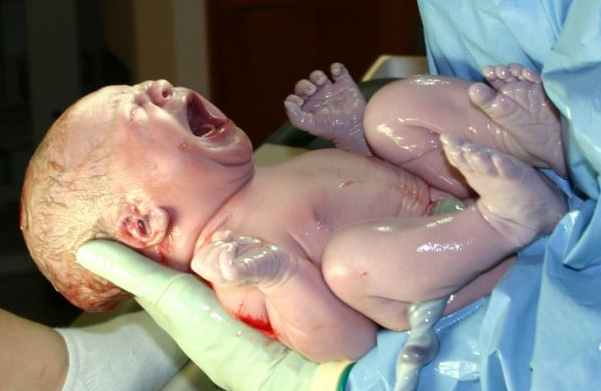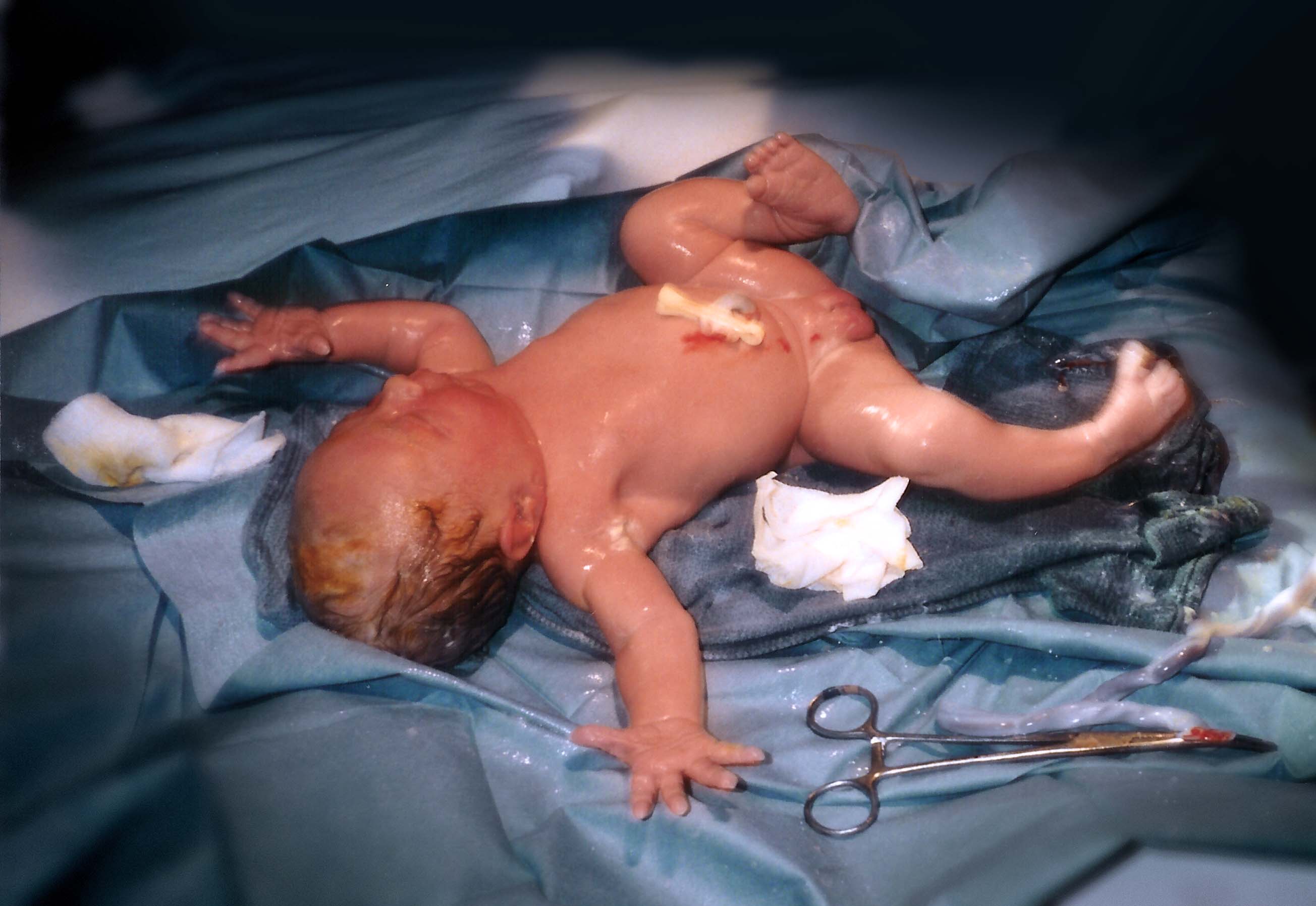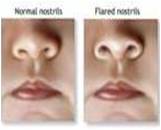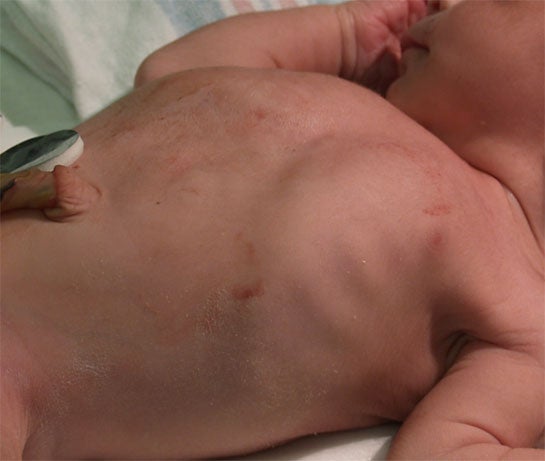INITIAL RAPID ASSESSMENT OF NEWBORN
This module focuses on assessment of the newborn infant. The assessment begins at birth and is done periodically by the nurse during the next two to four days. This eLearning module will describe assessment techniques and normal variations in newborn appearance.
After the infant is born, your initial assessment is quick and will occur at the same time you are drying and warming the infant for placement on the mother's chest for skin-to-skin contact or under the warmer. Don't forget to wear gloves until after the infant has been bathed. The infant is wet with amniotic fluid and slippery and may be a bit bloody.

Your initial assessment is primarily listening and observation.
- What do you hear?
- Is the baby crying? (See picture above. This is a good sign!)
- Is the baby grunting or singing? (This can be a sign of respiratory distress).
- Click here to listen to grunting.
- What do you see?
- What is the overall body color?
- Pink? (See picture above. This is a good sign!)
- Pale? Ruddy? Blue? (Not a good sign).
- Or are only the feet and hands blue? (See picture above. This is a normal finding in the first 24 hours).
- What is the tone and position of the body?
- Are the legs and arms pulled into the body? (See picture above. This is a good sign!)
- Are the legs and arms limp? (See picture below-not a good sign! ).

This infant shows little muscle tone of arms and legs.
- How is the respiratory effort?
- Is the infant breathing? (A good sign!)
- Does the chest rise and fall? (A good sign!)
- Are there substernal or intercostal retractions? (May are signs of respiratory distress).
Picture used with permission Dr. Janelle Aby, Stanford Medical School, Palo Alto, CA
This infant shows substernal retractions and intercostal retractions. These are signs of respiratory distress.
- Is there nasal flaring?

Left picture is normal.
Right picture shows nasal flaring. This can be a sign of respiratory distress.




